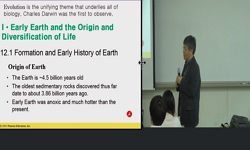This study was conducted to gain basic data for alleviation of gas emission and conservation of healthy soil environment by investigating an aspect of gas emission and microbial diversity due to the supplement of different fertilizers after applicatio...
http://chineseinput.net/에서 pinyin(병음)방식으로 중국어를 변환할 수 있습니다.
변환된 중국어를 복사하여 사용하시면 됩니다.
- 中文 을 입력하시려면 zhongwen을 입력하시고 space를누르시면됩니다.
- 北京 을 입력하시려면 beijing을 입력하시고 space를 누르시면 됩니다.

Changes of Soil-Emission Gases and Microbial Diversity by Different Fertilizers Supplemented after Application of Livestock-Manure Compost in Greenhouse Soil = 시설재배지(施設栽培地)에서 축분퇴비(畜糞堆肥) 시용시(施用時) 보충비종(補充費種)에 따른 토양배출(土壤排出)가스 및 미생물다양성(微生物多樣性)의 변화(變化)
한글로보기https://www.riss.kr/link?id=A106753760
-
저자
강항원 (National Yeongnam Agricultural Experiment Station,Rural Development Administration) ; 고지연 (National Yeongnam Agricultural Experiment Station,Rural Development Administration) ; 박향미 (National Yeongnam Agricultural Experiment Station,Rural Development Administration) ; 이재생 (National Yeongnam Agricultural Experiment Station,Rural Development Administration) ; 강위금 (National Yeongnam Agricultural Experiment Station,Rural Development Administration) ; 박경배 (National Yeongnam Agricultural Experiment Station,Rural Development Administration) ; Kang, Hang-Won ; Ko, Jee-Yeon ; Park, Hyang-Mee ; Lee, Jae-Saeng ; Rang, Ui-Gum ; Park, Kyeong-Bae
- 발행기관
- 학술지명
- 권호사항
-
발행연도
2000
-
작성언어
English
- 주제어
-
등재정보
KCI등재
-
자료형태
학술저널
- 발행기관 URL
-
수록면
52-60(9쪽)
- 제공처
- 소장기관
-
0
상세조회 -
0
다운로드
부가정보
다국어 초록 (Multilingual Abstract)
This study was conducted to gain basic data for alleviation of gas emission and conservation of healthy soil environment by investigating an aspect of gas emission and microbial diversity due to the supplement of different fertilizers after application with a livestock manure compost in greenhouse soils. Green pepper was cultivated in clay loamy soil from April to August. Before planting, a livestock manure compost was applied with $741mg\;ha^{-1}$ on the basis of the phosphate content contained in compost. And then, deficient nitrogen for cropping was supplemented with either quick-acting fertilizer of urea or a controlled slow release fertilizer made from urea formaldehyde(U/F). $NH_3$ and R $NH_2$ gases emitted from soil showed a low concentration in the early stage but a maximum in 27 days after planting, then decreased rapidly and not detected after 33 days. Their average concentrations were 42% and 85% lower in the treatment of slow release fertilizer than that of urea fertilizer, respectively. $CO_2$ gas emitted under urea fertilization was ranged from 1,200 to $3,200mg{\ell}^{-1}$ and that in slow release fertilizer was $900{\sim}2,650mg\;{\ell}^{-1}$. The average concentration of urea treatment was $2,260mg{\ell}^{-1}$ and 30% higher than that of slow release fertilizer. The treatment of slow release fertilizer with the lapse of cropping time populated larger in numbers of bacteria, actinomycetes, nitrate bacteria and nitrate reduction bacteria, and ratios of bacteria and actinmycetes to fungi than that of urea fertilizer. But the number of fungi was higher in the treatment of urea fertilizer and denitrifying bacteria showed a similar trend in both treatments. The microbial diversity index, which calculated with numbers of 6 species of microorganisms, was decreased with increasing of growing stage in the range of 0.1 to 0.35 and that was higher in the tratment of slow release fertilizer than urea.
동일학술지(권/호) 다른 논문
-
- 한국토양비료학회
- Yeong-Sang Jung(정영상)
- 2000
- KCI등재
-
Condenser Characteristics of Dielectric Soil Moisture Sensor
- 한국토양비료학회
- Yong-Taeg Oh(오영택)
- 2000
- KCI등재
-
Effect of Soil Physical Characteristics on Rhizome Rot Incidence of Platycodon grangiflorus
- 한국토양비료학회
- Young-Han Lee(이영한)
- 2000
- KCI등재
-
Kinetic Study of Cadmium Adsorption by Sewage Sludge
- 한국토양비료학회
- Sang-Mo Lee(이상모)
- 2000
- KCI등재




 ScienceON
ScienceON




